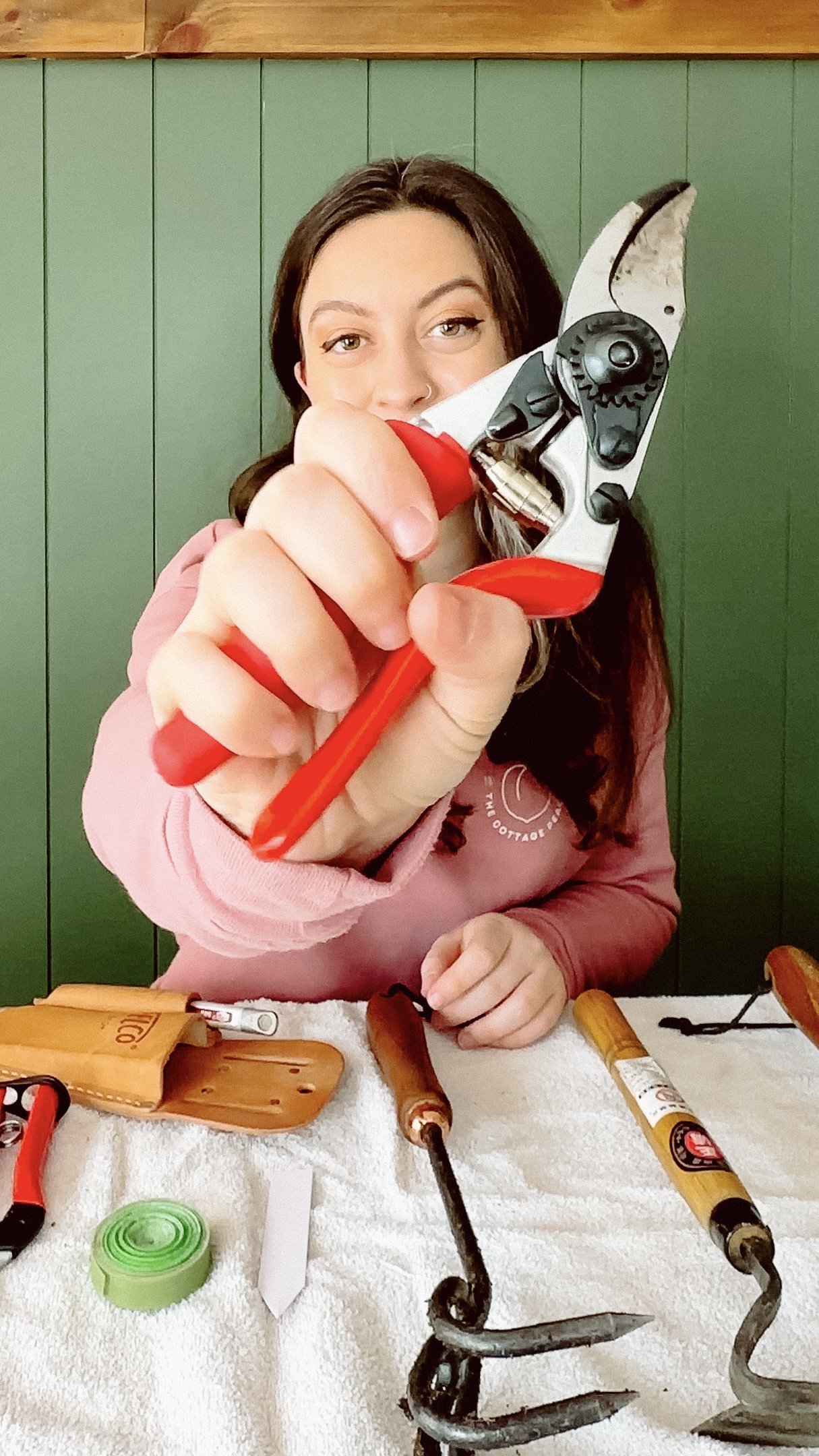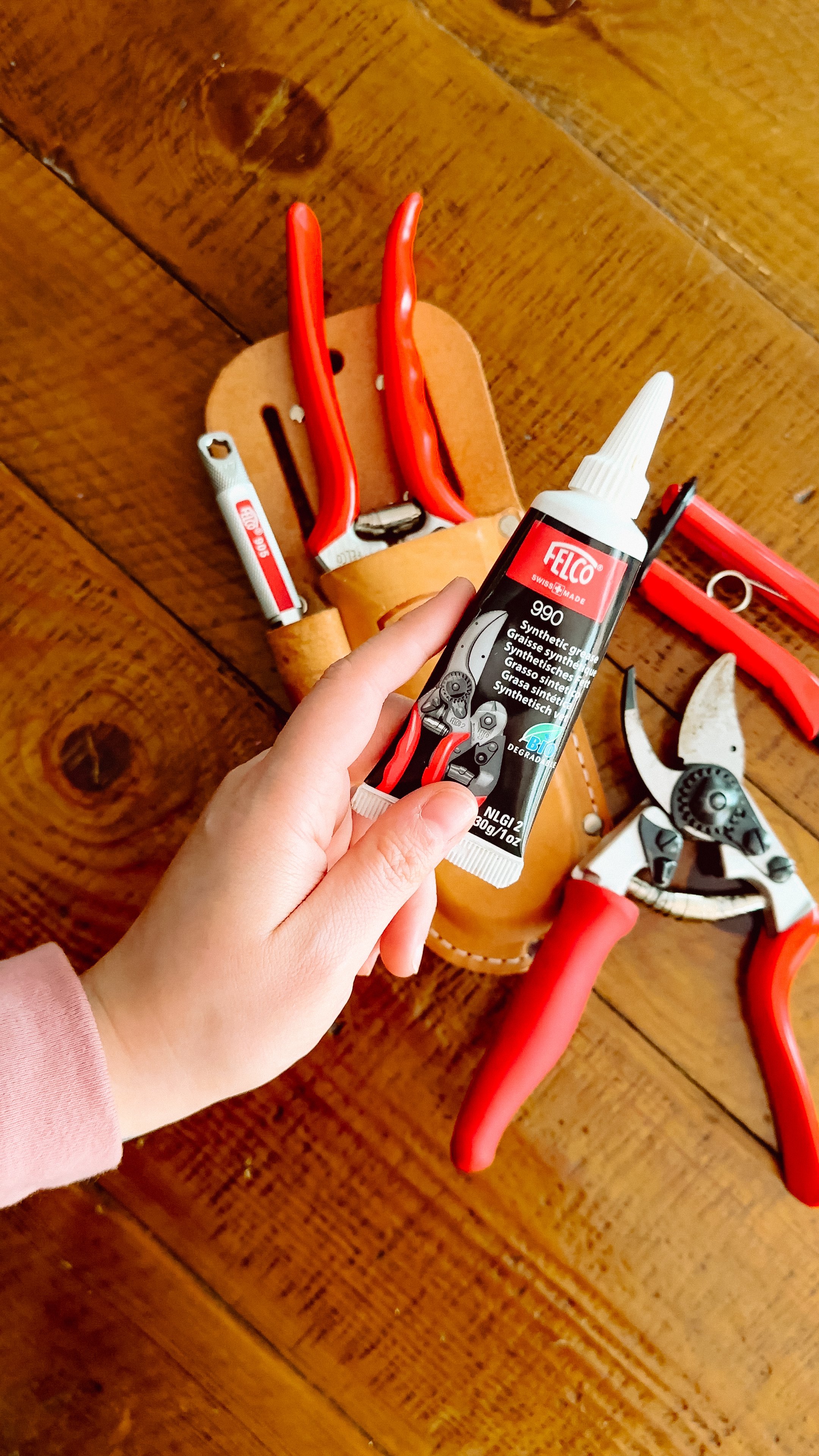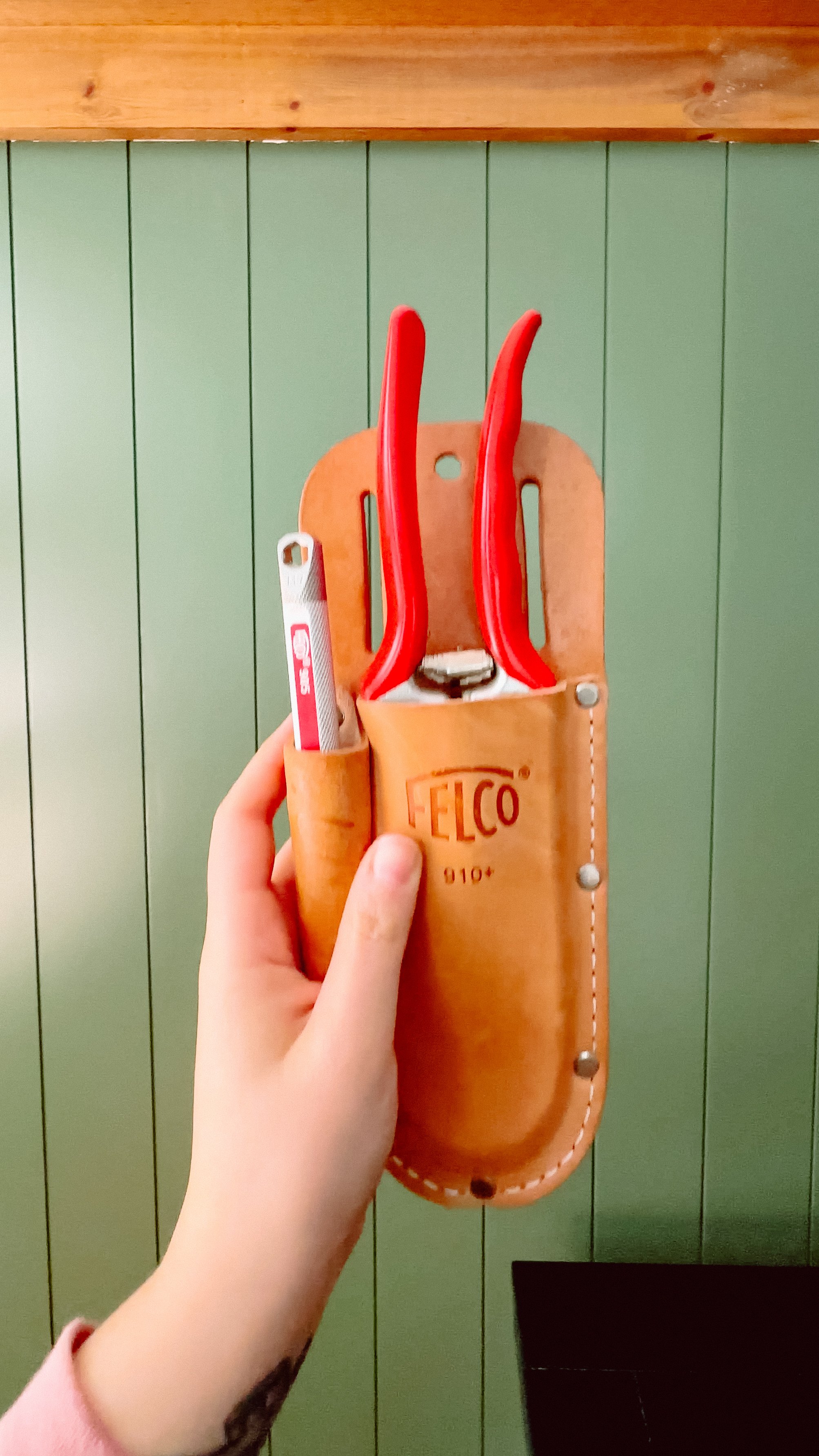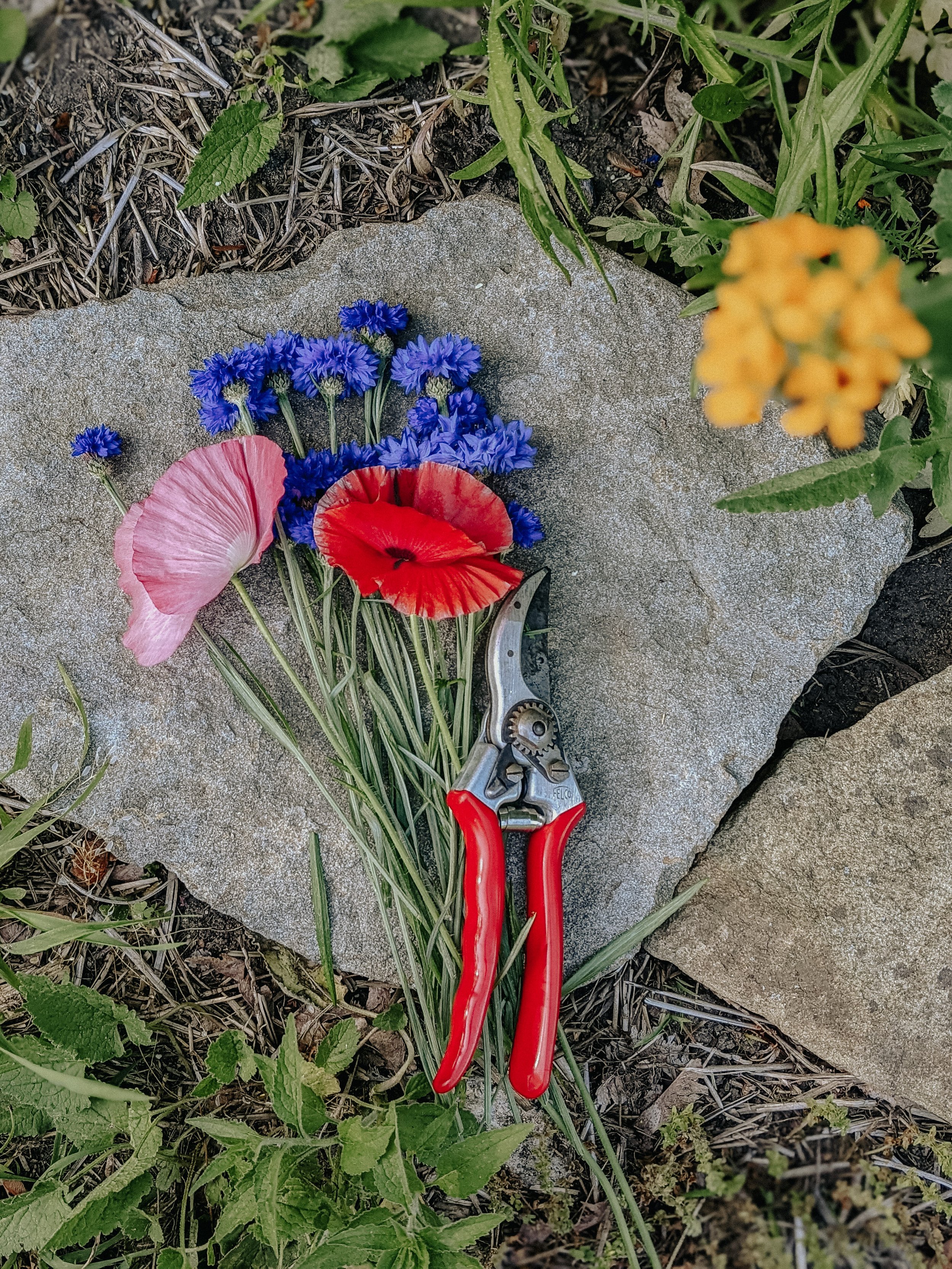BACKYARD GARDENING MADE SIMPLE
Garden Tool Maintenance | The Best Garden Tools For Chronic Pain
I know we're all anxious to get into garden planning, but there's one thing that's just as important to having a successful garden this year as a good plan; the tools that you're going to use to garden. I don’t use many different kinds of garden tools since I like to keep things simple, but the garden tools that I use have to withstand a lot of use, as well as be comfortable enough to use for extended periods of time. I prefer to buy things once, and I’d rather invest a little more in a tool that I will have for a lifetime than continually replace and send old ones to the landfill.
I know we're all anxious to get into garden planning, but there's one thing that's just as important to having a successful garden this year as a good plan; the tools that you're going to use to garden. I don’t use many different kinds of garden tools since I like to keep things simple, but the garden tools that I use have to withstand a lot of use, as well as be comfortable enough to use for extended periods of time. I prefer to buy things once, and I’d rather invest a little more in a tool that I will have for a lifetime than continually replace and send old ones to the landfill.
The reason comfortable garden tools are especially important for me is that I have chronic pain. About ten years ago I was diagnosed with arthritis, and this affects me not just in terms of pain but in terms of weakness that makes gripping things difficult - so having garden tools that are comfortable and easy to grip is essential for me, and I’ve found through a lot of trial and error which ones work best and which ones just make things worse.
But I’ve also realized it’s less about having what you’d think of as a comfortable handle and more about having a garden tool that works so well, it reduces the amount of time you have spend using it - because the reality is that no matter how comfortable a garden tool is, when you have chronic pain you’re going to hit a time limit (or number of available spoons) faster than someone who doesn’t, no matter how “comfortable” that garden tool may be.
Effective garden tools are sharp and sturdy, don’t wobble, and have features that make the task itself easier and faster. They are typically built to last using classic construction methods that withstand the test of time. The only downside is that they usually cost a bit more upfront. I wish I had a workaround for this, but for me personally it is worth the investment in order to be able to continue participating in hobbies that feel essential to my identity like gardening, regardless of my physical limitations.
I'm going to walk you through all the garden tools that I use and I'm also going to tell you my strategy for daily maintenance versus seasonal maintenance, so let's get started!
The Best Garden Trowel
I don't think I have to tell you why a trowel is important, but I will tell you to get one that has a beveled edge almost like a blade to make cutting through soil easier. I like my trowel to have a bit of weight behind it with a solid metal blade and wood handle. This metal and wood trowel is B-Corp certified, sustainably produced and built to last.
The Best Garden Weeder
A Japanese sickle is extremely sharp which makes breaking up weeds by cutting through the roots themselves extremely easy. With my chronic pain and fatigue, weeding is one of the more strenuous garden tasks I have to do, and this greatly eases a lot of the strain I experience. I don't really do any tilling, but this is also great if you do need to kind of loosen up the dirt in some spots. This Japanese sickle has served me well for many years now and the blade is still as sharp as the day I got it.
The Best Garden Pruners
Up until recently the Felco 2s were my number one pick for pruning and clipping anything larger, and while I still love them last year Felco reached out to me and offered to send me their Felco 15s. What's really amazing about these pruners is the handle rotates when you squeeze it close, which takes so much of the pressure off of your hand, you would not believe it. The first time I tried them I practically cried because it made such a huge difference in how comfortable the grip was. The ONLY downside is the Felco 15s have a slightly smaller blade than the Felco 2s, so I still keep the Felco 2s around since they're great for larger projects.
The Best Garden Snips
Garden snips get the absolute most use in my garden, since they’re compact and lightweight they are perfect for harvesting and removing dead leaves from vegetable plants, as well as pruning suckers from tomatoes and deadheading flower plants. Many people I know, myself included, swear by these Felco 322 snips for just this purpose.
A couple small things that I consider garden tools you may consider garden accessories:
Plant labels
You don't need to get fancy with these. These thin white plastic ones can be reused again and again with a paint marker and are durable and easy to read from a distance.
Velcro plant tape
If tying tons of knots for trellises is uncomfortable for you like it is for me or just generally time consuming, this velcro plant tape will make all the difference. I love this stuff - you can custom fit it to any size that you need and you can reuse it over and over again.
How to Find Comfortable Garden Tools
When you're looking for a handle that's going to be ergonomic, it’s easy to jump straight for the options with a cushioned handle, but I’m going to caution you against this. Unfortunately in a lot of cases those foam cushions aren't very long lasting and they tend to deteriorate in sunlight. You will have a lot more luck finding comfortable tools if you are able to invest in quality tools built with a specific purpose in mind. But generally speaking, I often find wooden handles to be most comfortable. They just feel slightly “softer” than a metal based handle, and they hold up really well. Most also have a bit of a curve to them so they almost have that hand carved feel.
Daily Garden Tool Maintenance
My general rule of thumb is I'm trying to keep my tools as clean as possible throughout my daily tasks so that I don't really get to this point where they're super dirty. I'm sure most gardeners have also had the humbling moment where you realize that you left a tool outside in the rain, only to find it weeks later impossibly rust. Last year I came up with the solution; I have a container outside that I can keep them in that’s actually connected to my raised beds so I can just drop them and go. I think the most important thing here is reducing that friction and making it super accessible and easy. Something like a mailbox mounted somewhere can be a really great affordable solution for storing your garden tools.
Seasonal Garden Tool Maintenance
In the winter when things are slow is the perfect time to give all your garden tools a once over and some deep cleaning/TLC. Trowels, hand rakes and hoes generally just get brushed off with a dry rag and any wooden handles oiled with linseed oil. Blades are a little bit trickier and require some additional attention. I always keep a Felco 905 sharpener around for this task, it is a really great all purpose sharpener when you've got tools with blades that you need to maintain. But really a bit of Felco 990 grease, a sharpener and some clean rags are all you’ll need to get started!
Cleaning snips
My harvest snips always have some plant residue buildup on the blades themselves that I want to clean off. In terms of daily maintenance with these, I sanitize the blades with an alcohol wipe pretty much every time that I use them because we don't want to be transferring any diseases from one plant to another. For example last year I had an experience with black rot on my grapes which can transfer to other plants and thankfully when I discovered this I didn't have to panic because I knew I had taken care of sanitizing those blades before using them on any other plants.
For something like these snips where they are really only cutting through really lightweight plant material you're not going to notice a lot of burrs on the blades themselves most of the time, but you can always do a quick sharpen just to give them a fresh edge.
Sharpening and cleaning Felco F2s
If your Felcos aren’t looking super rusty or having trouble opening and closing smoothly, you can usually get away with just a light sharpening. In general, it’s a good idea to take them apart once a year to regrease the internal mechanisms. If you do need to take these apart, never use water, always use some kind of oil based lubricant cleaner. Take a photo before you take them apart so that you know how it goes back together. And of course, we're dealing with a very sharp blade here so make sure that you’re holding with a secure grip and cleaning/sharpening away from your body.
Keeping your garden tools in good shape doesn’t have to be difficult, but it is important to prioritize finding time each winter to keep them working like new. What other garden tools would you like me to cover next?
Make Gardening Manageable with These Must-Have Tools for Low Energy Gardeners
April brings with it the arrival of the height of gardening preparations, and the demand it takes on our bodies as we assemble new gardens, pull lawn furniture from storage and shovel mulch means that I am ending my days sore and tired. I’ve been gardening for most of my life in one form or another, but ten years ago I was diagnosed with psoriatic arthritis, and since then I’ve had a whole decade to come up with the best gardening hacks to and gardening tools for gardening with chronic pain and low energy.
The Cottage Peach is reader-supported. When you purchase through links on our site, we may earn an affiliate commission at no additional cost to you. All opinions are our own.
April brings with it the arrival of the height of gardening preparations, and the demand it takes on our bodies as we assemble new gardens, pull lawn furniture from storage and shovel mulch means that I am ending my days sore and tired. I’ve been gardening for most of my life in one form or another, but ten years ago I was diagnosed with psoriatic arthritis, and since then I’ve had a whole decade to come up with the best gardening hacks to and gardening tools for gardening with chronic pain and low energy.
Psoriatic arthritis often confuses people who don’t have it - its cousins rheumatoid and osteoarthritis are far more common, so there’s a misconception that psoriatic arthritis isn’t as serious or doesn’t have as much of an impact on quality of life as these more well known forms of arthritis. The fact is that psoriatic arthritis is more than a skin condition. I experience severe joint pain and fatigue, just like someone with rheumatoid arthritis or osteoarthritis. I just get the added “bonus” of sensitive dry skin too. While exercise can help with my symptoms, it can also make them worse if I push myself too hard. I’ve had to learn my physical limitations by testing them, and those limits are a lot lower than someone living without an autoimmune disease. The idea that arthritis is an “old person's” condition is so pervasive that people often think it can’t really be that bad, especially since I am young and don’t look sick. But invisible illnesses like arthritis and other autoimmune conditions can dramatically change your life, no matter how old you are.
I’ve hit breaking points with my arthritis while gardening many times. I have sat, covered in dirt and crying because I couldn’t bend over or kneel to clear weeds from an in-ground garden bed. I thought the solution was to just scoot along on my butt, but quickly discovered that even though this was easier on my joints it was still physically exhausting and left me too fatigued to finish. I have lost the hand strength to grip a shovel or rake on more than one occasion. I have felt scared that someday even the little things I do could be beyond my ability if I’m not careful. Gardening is rooted in my soul, a part of my identity, and I don’t know what I’d do without it at this point. Gardening and nature in general have brought me out of the darkest moments in my life. Tending to plants gives me purpose and fulfills my need to nurture.
This is my why. The reason I sit here day after day and type these words to you: I grew from these challenges, and I want to show you how you can too. Now these hard times that I faced are just more proof that I know I can trust myself to stand up for my needs and prioritize them. They solidified my identity and brought me closer to knowing myself. Most of this came from mindset (we are hard-wired to see the negative first, but that can be overcome) but after that mindset shift, in order to make real concrete change I invested in a few gardening tools that would make it possible for me to continue doing what I love.
The key to low energy gardening:
These tools won’t give you superpowers. I could give you all my best vegetable gardening tips and tricks but you’ll still find the key to low energy gardening is planning and pacing yourself. This means working in short blocks of time, around the times of day when you know you have the most energy (mornings are hardest for me) and being strategic about resting when needed by encouraging rest through your outdoor garden seating arrangements. They also may not fully address all of the limiting factors you may experience. I hope however that they can serve as a jumping off point from which you will feel inspired to find what feels good for you. I have chosen these tools either because they are specifically comfortable to handle with chronic pain, or they speed up whatever task they are designed to be used for.
Tools used for gardening
Weeding tools
Gardener's Lifetime Taproot Weed Extractor
Remove stubborn taproots and other deep-rooted weeds with less effort! Insert the prongs of this weed extractor vertically, right at the root, until the tubular section rests on the ground. Then, pull the handle towards you, and the weed will pop right out.
Gardener's Lifetime Half-Moon Hoe
Also called a swan-neck hoe, this popular tool cuts weeds just below the soil surface. The ergonomic design lets you stand up straight while working, minimizing back strain, and the curved blade lets you work in tight spaces between plants and rows. To give it extra strength and durability, the wooden handle is bolted into the deep socket
Gardener's Lifetime Cape Cod Weeder
Used by generations of New England gardeners, Cape Cod Weeders slice weeds just below the soil line and are great for working in tight spaces This Lifetime Cape Cod Weeder is hand-forged from the finest high-carbon Swedish boron steel with a pointed, self-sharpening tip. Unlike flimsy tools that are stamped from thin stainless steel, this weeder is ready for a lifetime of use by serious gardeners. To give it extra strength and durability, a 4" metal tang extends into the handle, which is securely fastened with a welded socket.
Best raised garden beds
Self-Watering Elevated Planter Box, 2' x 8'
These no-bend garden boxes keep plants hydrated via a series of innovative, connected reservoirs that deliver water to roots on demand. Four generous 5-gallon reservoirs extend the time between waterings and create more even moisture throughout the bed. And, since water is drawn primarily from the bottom instead of applied from the top, less water is lost to evaporation too! 10" planting depth accommodates a variety of crops, from tomatoes to root-crops like carrots.
The height of the planter box has other advantages too: fewer weeds, reduced maintenance, and fewer critters nibbling at your prize plants. The sturdy aluminum legs won't buckle or sag, and the wood is naturally rot-resistant and safe for your organic crops.
Garden seating ideas
Garden seating is going to be so important if you have low energy or chronic pain. I like to have one main large work table outside that I can sit at for tasks I know will take longer like transplanting seedlings or just organizing a harvest. This is an inviting spot where I can rest while still feeling productive. It’s also a good idea to scatter around various benches and chairs throughout your garden space or at least keep a folding camp chair handy that you can collapse onto periodically in between weeding, watering and harvesting. Always keep water and sunscreen handy - I like to keep my harvest basket stocked with these essentials plus my clippers too, so I’m not walking back and forth just gathering everything. This way you don’t have to go inside every time you need a break, wasting more energy with the walk to and from the house as well as interrupting the flow state of gardening that gives us the most mental clarity.
Deep Seat Garden Kneeler
The extra-wide base makes it much more stable than narrower models, with sturdy sides that lock in place so you can raise and lower yourself with confidence. Easily flips from kneeler to padded bench. Sides fold in for compact storage. Holds up to 250 lbs. Weighs just 9 pounds, so it’s easy to carry.
Bamboo Garden Stool and Basket Combo
Versatile, heirloom-quality, all-in-one basket, stool, and seat. Carry tools and plant starts out to your garden, harvest veggies to bring inside, sit on it to weed and tend or keep potatoes and onions (or bath items, dog toys, and more!) neatly corralled.
Beautifully made from bamboo, a strong and highly renewable resource, it can support up to 250 lbs. as a seat. Quality joinery gives you the confidence to step up or sit down and go about your work. Flipped over, it feels solid in your hands plus the handles are wide and smooth — making it ultra comfortable to carry.
Deluxe tractor scoot with bucket basket
This go-anywhere, do-anything, super-stable rolling scoot lets you work from a comfortable seated position and is perfect for gardening, washing tires, painting baseboards and more. Super-sturdy; holds up to 400 lbs. Bucket Basket holds a 3-1/2 gal. Tubtrug or 5-gal. pail and carries up to 40 lbs.; perfect for tossing weeds or gathering the harvest. Handle extends for pulling, retracts & locks for support. Storage tray holds hand tools and supplies.
Best garden hose
Low energy garden irrigation is going to have to be a whole post in itself, because there are as many ways to water a garden as there are gardeners in the world. I will say that watering has turned out to be one of the biggest physical challenges to gardening for me. Since it often needs to be done daily, and cannot be timed around when I’m feeling best in the week, and winding/unwinding hoses is a special kind of torture to those of us with limited energy. Hoses are a low energy gardener’s number one enemy. I have two solutions to suggest:
Hoselink Retractable Garden Hose
The Retractable Garden Hose Reel is a wall-mounted unit featuring a high-quality spring-loaded hose that automatically rewinds on command. Its specially designed ‘stop-anywhere’ locking mechanism secures the hose at any length, eliminating excess hose to prevent kinks and tangles. To lengthen, simply walk the hose out further and stop wherever you want.
Olla Watering System
You can use ollas like these and never have to water your garden the hard way again, while reducing wasted water lost to evaporation by 60-70%.
Indoor gardening hacks
If starting a full outdoor garden is too much for you I have one last gardening tip to share: consider indoor gardening. There are so many options available now that will actually allow you to grow your own fruits and vegetables inside of your house. My favorite is the Smart Garden from Click&Grow - both stylish and functional tower garden options that bring nature to you. You can read more about my thoughts on the Click&Grow here!









